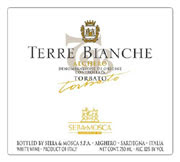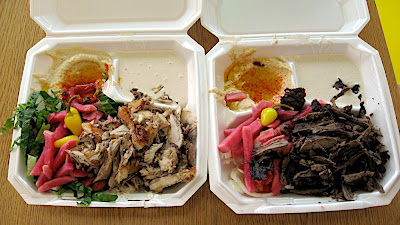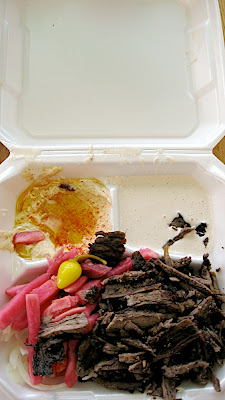For some people, cheese is just a food. For others, it’s an addictive substance.
Cheese lovers hover at cheese counters and unconsciously paw at the glass that keeps them from aromatic wedges of Parmesan, stinky rounds of French triple creams and pungent British blues. They’re the people that actually eat the cheese samples at Whole Foods. Normal people may go to a cheese shop and ask to speak to the cheesemonger–but cheese addicts go to cheese counter and ask for “the pusher”.
I am one of those people. My name is Brooke and I have a cheese problem.
Confessions of a Cheese Lover
It’s sad how much money I’ve spent on goat, sheep and cow’s milk cheeses. With the ridiculous cost of gas, I’d rather go easy on the environment (and my cheese buying budget) and walk a mile to the store and back, just so I can get a great wedge of cheese. Considering my commitment to the creamy stuff, I recently decided I should learn how to make it. Maybe not a great idea for a cheese lover (addict) like myself to do, but besides being a great learning experience, I could save some serious money while I’m at it.
Maybe making my own cheese a bad idea for someone like me. But after getting my first taste of home made cheese I have to say, how can something so good be bad?
After doing some tentative research on-line that offered me disappointing results, I stumbled upon some chefs making cheese at the restaurant I work at. Low and behold, in my very own place of culinary work, I learned that cheese making didn’t need to be difficult. At all.
Thanks to the kind, smart and talented chefs at my restaurant, they answered all of my questions and tolerated my obsessive observation of the cheese making process so that I could come to you with some great tips and one of the easiest cheese making recipes around! Ladies and gentlemen, I give you Greek yogurt cheese!
Greek Yogurt Cheese
(makes approx. 12 oz. of cheese)
*This cheese would also be great with the addition of lavender or herbs such as thyme, dill or oregano.
Ingredients:
1 regular sized (32 oz.) container of Greek Yogurt
1 lemon (to be zested and then squeezed)
Kosher salt
Cheesecloth (cut into 3-4 18-20” pieces)
Kitchen twine
Tall prep container
Pour the container of Greek yogurt into a medium sized bowl. Mix into the yogurt the zest and juice of one lemon.
Add salt to taste. 2-3 tablespoons should do.
Line a second bowl with the cheesecloth, being careful to leave the sides hanging out over the side.
Ladle the cheese mixture into the cheesecloth-lined bowl. Bring the tops of the cheesecloth together, creating a semi-tight sack or “purse”. You will notice clear liquid dripping from the sack already. The cheese making process has begun! Though this is a very exciting step, be sure not to get too eager to remove moisture from the yogurt and squeeze the purse too tightly. Otherwise you’ll see yogurt oozing out through the cheesecloth, not just liquid. Tie the top of the purse off with kitchen twine.
Wrap the loose portion of the purse (use twine if you need to) to the neck of a wooden kitchen spoon or ladle. Set the spoon across the top of your prep container (or, if your prep container is too shallow—set it between two tall containers and let the moisture fall into a short bowl).
Make sure that the bottom of the cheesecloth purse doesn’t touch the bottom of the container! Keep in refrigerator for at least 24 hours. The cheese will feel firm, like a goat cheese when it is done. Remove from cheesecloth. Serve! The texture of the cheese should be that of a goat or sheeps’ milk cheese. The flavor, however, is incredibly refreshing, zesty (from the citrus) and deliciously creamy. You won’t want to waste one bit of this cheese!
My husband and I vow to make this cheese every month and skip the cheese counter.
Simple serving suggestions: Serve on crackers with Italian flat parsley and thinly sliced lemons.
Or toasted bread with tomato, parsley and prosciutto.
Next up, the dish that inspired home made Greek Yogurt Cheese!















